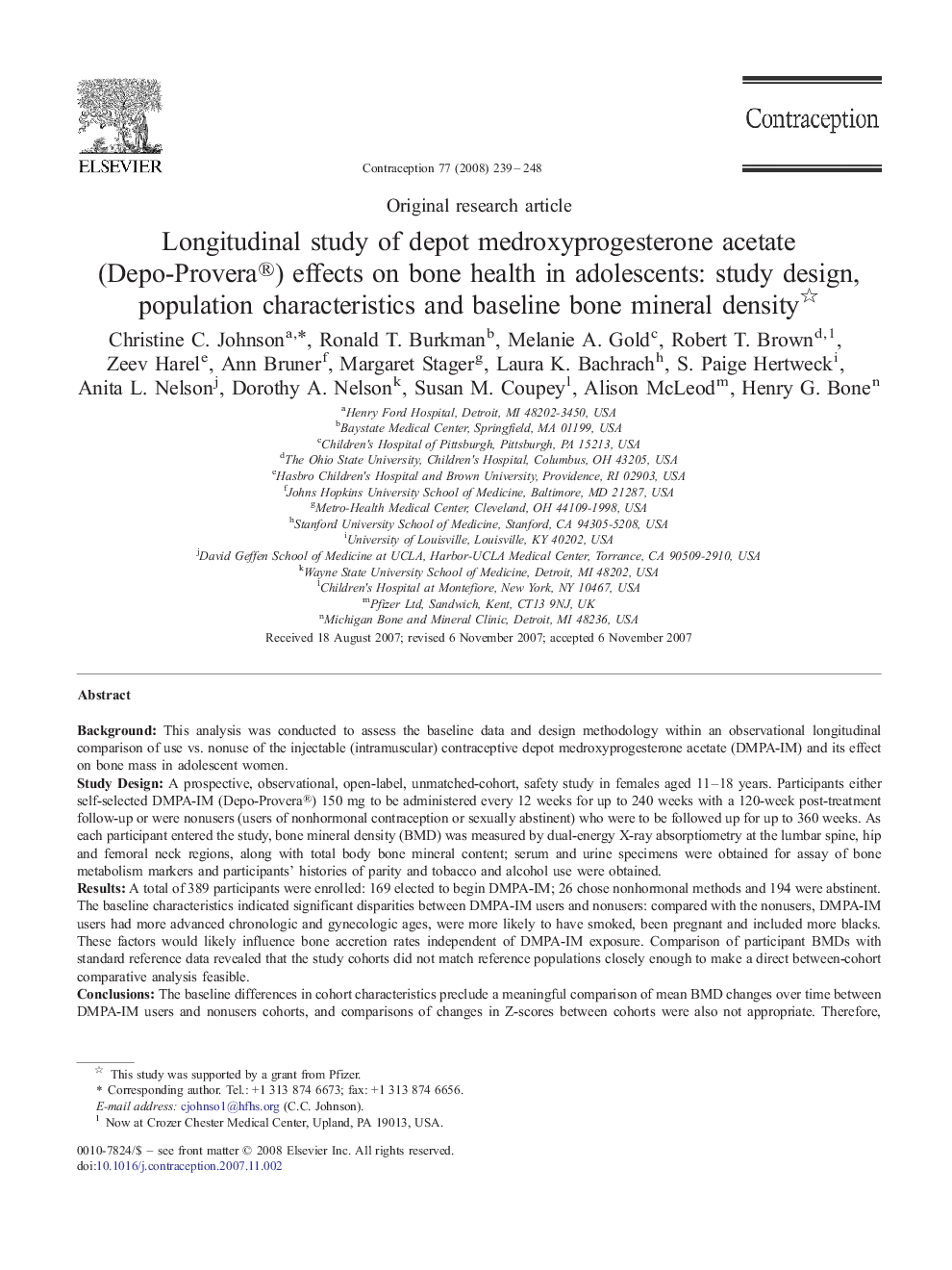| کد مقاله | کد نشریه | سال انتشار | مقاله انگلیسی | نسخه تمام متن |
|---|---|---|---|---|
| 3915718 | 1251518 | 2008 | 10 صفحه PDF | دانلود رایگان |

BackgroundThis analysis was conducted to assess the baseline data and design methodology within an observational longitudinal comparison of use vs. nonuse of the injectable (intramuscular) contraceptive depot medroxyprogesterone acetate (DMPA-IM) and its effect on bone mass in adolescent women.Study DesignA prospective, observational, open-label, unmatched-cohort, safety study in females aged 11–18 years. Participants either self-selected DMPA-IM (Depo-Provera®) 150 mg to be administered every 12 weeks for up to 240 weeks with a 120-week post-treatment follow-up or were nonusers (users of nonhormonal contraception or sexually abstinent) who were to be followed up for up to 360 weeks. As each participant entered the study, bone mineral density (BMD) was measured by dual-energy X-ray absorptiometry at the lumbar spine, hip and femoral neck regions, along with total body bone mineral content; serum and urine specimens were obtained for assay of bone metabolism markers and participants' histories of parity and tobacco and alcohol use were obtained.ResultsA total of 389 participants were enrolled: 169 elected to begin DMPA-IM; 26 chose nonhormonal methods and 194 were abstinent. The baseline characteristics indicated significant disparities between DMPA-IM users and nonusers: compared with the nonusers, DMPA-IM users had more advanced chronologic and gynecologic ages, were more likely to have smoked, been pregnant and included more blacks. These factors would likely influence bone accretion rates independent of DMPA-IM exposure. Comparison of participant BMDs with standard reference data revealed that the study cohorts did not match reference populations closely enough to make a direct between-cohort comparative analysis feasible.ConclusionsThe baseline differences in cohort characteristics preclude a meaningful comparison of mean BMD changes over time between DMPA-IM users and nonusers cohorts, and comparisons of changes in Z-scores between cohorts were also not appropriate. Therefore, within-participant BMD decreases from baseline were established as safety thresholds, and the proportion of individuals crossing those thresholds on a persistent or progressive basis was identified as the revised primary end point.
Journal: Contraception - Volume 77, Issue 4, April 2008, Pages 239–248